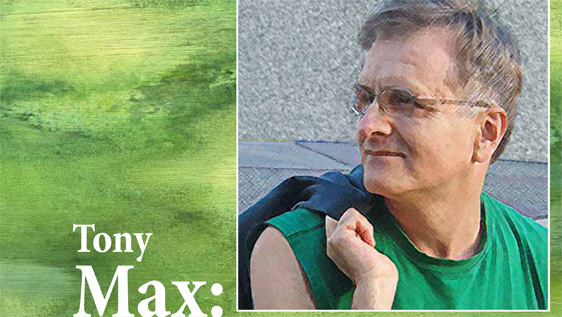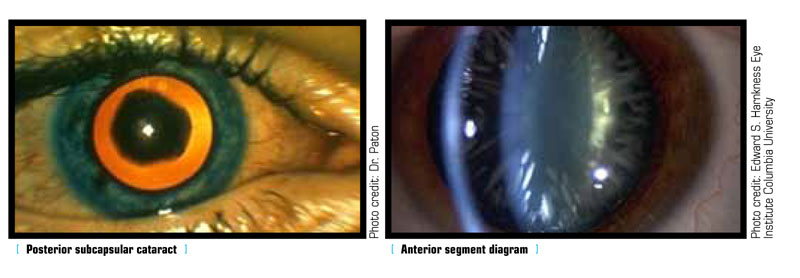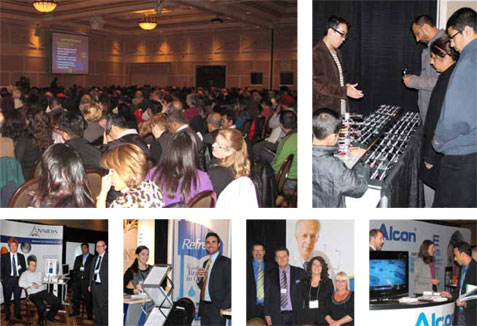By Evra Taylor
 Branded by its organizers as “The complete eyecare event,” this year’s International Vision Expo West was the most inclusive ophthalmic conference and expo yet. As a testament to this, approximately 13,000 optometrists, ophthalmologists and opticians gathered at the Sands Expo & Convention Center in Las Vegas, Nevada from September 21-25 to participate in an impressively broad range of activities. One of the event’s themes was “expand your field of vision,” a fitting description of a forum offering everything from the latest in fashion and trends to a comprehensive education program taught by leading authorities, along with courses on business practice and networking opportunities.
Branded by its organizers as “The complete eyecare event,” this year’s International Vision Expo West was the most inclusive ophthalmic conference and expo yet. As a testament to this, approximately 13,000 optometrists, ophthalmologists and opticians gathered at the Sands Expo & Convention Center in Las Vegas, Nevada from September 21-25 to participate in an impressively broad range of activities. One of the event’s themes was “expand your field of vision,” a fitting description of a forum offering everything from the latest in fashion and trends to a comprehensive education program taught by leading authorities, along with courses on business practice and networking opportunities.
Tom Loughran, vice president of Reed Exhibitions, co-owners of the event with The Vision Council, said, “Today’s eyecare professional demands educational tools and customized business solutions for a healthy practice and healthy patients. We pride ourselves on being able to offer something for everyone. Without a doubt, Vision Expo is the place to network, learn and compare new technologies and concepts that practitioners can immediately implement in their practices. Overall, show quality remained high and feedback from the show floor was excellent. Attendees were much more focused in their approach on the show floor than we have seen in the past. They did their research and came to Vision Expo West with the intent to learn, source and buy”.
A brand study was undertaken in 2010, resulting in several changes designed to refresh the Expo experience. This year, the exhibit hall was expanded by 12,000 square feet to a total of nearly 170,000 square feet. Multiple pavilions, the Galleria and The Suites housed more than 450 exhibitors on several floors. The Galleria showcased fashion-forward designs, with more than 100 booths and brands featuring some of the most fashionable eyewear collections from around the world, boasting edgy new eyewear styles at a variety of price points.
Jill Gardner, senior vice president of Signature Eyewear, expressed her enthusiasm, which was echoed by her peers. “The energy and traffic at this year’s Expo was positively buzzing. We had a great show and were excited to see so many customers in attendance. We definitely felt the excitement of the show was a positive direction for our industry, even once the show was over.”
“Vision Expo West 2011 was one of the most successful shows to date,” said Joseph Tallier, vice president of global sales for Ogi Eyewear.
Adopting a new approach this year, the continuing education program encompassed four core competencies: Business Solutions, Medical/Clinical, Optical Technology and Contact Lenses, making it easier for eyecare professionals to develop a continuing education curriculum personalized to their individual needs and allowing them to practice to the fullest extent of their license.
One of Vision Expo’s claims to fame is that with 388 hours of high-level education to select from, it educates more optometrists than any other eyecare meeting. In fact, the number of teaching hours was increased by more than 80 hours over last year’s offering. What’s more, it is the only education program with content for every level of staff. Optometry students were not left behind: they received free exhibit hall registration, along with the option to sit in on any continuing education course free of charge.
Management & Business Academy (MBA) from International Vision Expo East participated in this year’s Vision Expo West event. Created by CIBA Vision and Essilor, and endorsed by the American Optometric Association and The Vision Council, the MBA provides continuing education on topics such as staff management, practice performance measurement and practice growth strategies.
Introduced at last year’s show, “My Show Planner,” the award-winning Vision Mobile technology, offered attendees the ability to plan their show, explore exhibitor show specials, and keep track of appointments with exhibitors, via their mobile devices.
Vision Expo West proved to be an enormous success from a content point of view and the graphic design of its marketing materials was a show-stopper, as well.
The Optical Laboratories Association (OLA) celebrated its 25th anniversary at the OLA 2011 meeting, held during the Expo, during which 13 companies were presented with awards for 16 products. Winners of the OLA 2011 Awards of Excellence were announced during an evening reception in the exhibit hall. “This year’s silver anniversary is not about celebrating a single year of great products. It’s about celebrating 25 years of products that have helped to shape the optical business as we know it,” said Jonathan Jacobs, OLA immediate past president.








